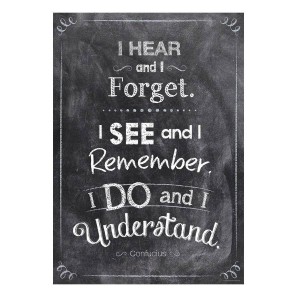How do we engage students? Well, first of all we need to know what we mean. According to The Glossary of Education Reform, student engagement refers to:
The degree of
attention, curiosity, interest, optimism, and passion
that students show when they are learning or being taught, which extends to the level of motivation they have to learn and progress in their education.
Believe it or not, being able to engage a student can actually help them remember what they have learned!
Neuroscience studies link personal relevance and emotional engagement to memory storage. For this reason it's of key importance to look at engagement from all sides & how it might affect our teaching experiences.
The four types of engagement
Appleton & his colleagues state that engagement is a multi-faceted construct. The extent to which students engage with language learning consists of
four aspects.
ACADEMIC: Refers to students' ADHERENCE TO ACADEMIC SYSTEMS/REQUIREMENTS.
BEHAVIOURAL: Refers to SS PARTICIPATION in the classroom.
COGNITIVE: The quality of students’ PSYCHOLOGICAL ENGAGEMENT IN ACADEMIC TASKS, including their interest, ownership, & strategies for learning.
AFFECTIVE: The quality of students’ sense of FEELING AS AN INTEGRATED MEMBER of the classroom & in their workplace.
In what ways can we use these dimensions to engage students more effectively? Using the above framework,
Davis, Summers & Miller might use the following examples:
ACADEMIC: Make sure that activities have a personal/context for students.
BEHAVIOURAL: Develop participation.
COGNITIVE: Show the relevance/value of learning the target language by linking it to their personal goals/work/aspirations/personal growth.
AFFECTIVE: Make students feel comfortable & part of the class – an equal member, breaking hierarchy that might exist in the workplace. That is, good relationships with peers & the teacher. Harness support from the family. The area that we as teachers could contribute to most is in creating a conducive environment where students can freely & openly engage with the language.
Pointers for creating an engaging classroom
Sara Bernard makes several suggestions in order to engage students in the language learning arena:
1. Give it context - connect it to their lives and things they already know
2. Use suspense
3. Keep it fresh
4. Make it student-directed
5. Appeal to students emotional side
This overlaps with Kenneth Wesson's
SCREAMS approach
applied to engage students in
building a firm foundation for learning English as a second language, by:
Saying/pronouncing key vocabulary words
Concept mapping or word webs
Reading words in context
Extracting personal meaning
Active learning experiences where students use the new word frequently
Memory formation (sense-making) based on utility
Self-monitoring for new opportunities to use the newly learned word

Further reading: Tips & tricks
Once you've thought of how you could use the above ideas to engage students, feel free to make us of the following resources to further enrich your teaching experience and possibly the lives of your students:
• The student Engagement Instrument
•
Thirty Active Engagement Activities in 30 Minutes
• 7 Ways to Increase Student Engagement in the Classroom
• 14 Classroom Activities That Increase Student Engagement

